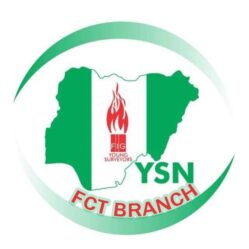Emerging technologies are revolutionizing the field of Surveying, enhancing accuracy, efficiency, and the overall scope of work Surveyors can perform. Here are some of the key technologies currently transforming the industry:
1. Drones (Unmanned Aerial Vehicles – UAVs)
Aerial Surveying: Drones equipped with high-resolution cameras and LiDAR sensors can quickly capture detailed aerial images and topographic data over large areas.
Efficiency: They reduce the time required for surveys and can access difficult or dangerous terrains safely.
Applications: Used for land surveys, construction site monitoring, infrastructure inspection, and environmental assessments.
2. LiDAR (Light Detection and Ranging)
High Precision: LiDAR technology uses laser pulses to create highly accurate 3D models of the terrain and built environments.
Vegetation Penetration: It can penetrate through vegetation, providing accurate ground models in forested areas.
Versatility: Applicable in topographic surveys, floodplain mapping, forestry, and urban planning.
3. Geographic Information Systems (GIS)
Data Integration: GIS integrates various data types and sources, enabling comprehensive spatial analysis and visualization.
Mapping and Analysis: Surveyors use GIS for mapping, spatial analysis, and managing geographic data, enhancing decision-making processes.
Applications: Urban planning, resource management, environmental analysis, and infrastructure development.
4. 3D Laser Scanning
Detailed Models: 3D laser scanners capture precise three-dimensional data of objects and environments, creating detailed digital models.
Historic Preservation: Useful in documenting historical sites and structures with high accuracy.
Applications: Building information modeling (BIM), forensic analysis, and industrial plant surveys.
5. Global Navigation Satellite Systems (GNSS)
High Accuracy: GNSS, including GPS, GLONASS, Galileo, and BeiDou, provide high-precision positioning data essential for Surveying.
Real-Time Kinematic (RTK) Systems: RTK technology enhances GNSS accuracy to centimeter level, crucial for boundary surveys and construction staking.
Applications: Land Surveying, geodetic measurements, and navigation.
6. Mobile Mapping Systems (MMS)
Dynamic Data Collection: MMS combines GNSS, LiDAR, and imaging sensors mounted on vehicles to collect data while in motion.
Speed and Coverage: They enable rapid data collection over extensive areas, ideal for road and infrastructure surveys.
Applications: Transportation planning, urban mapping, and utility management.
7. Building Information Modelling (BIM)
Integration with Surveying: BIM integrates with survey data to create detailed digital representations of buildings and infrastructure.
Lifecycle Management: Supports the entire lifecycle of a building, from design and construction to maintenance and demolition.
Applications: Architecture, engineering, construction, and facility management.
8. Robotic Total Stations
Automated Measurements: Robotic total stations automate angle and distance measurements, increasing survey efficiency and accuracy.
Remote Operation: They allow Surveyors to operate the equipment remotely, reducing the need for multiple personnel on-site.
Applications: Construction staking, topographic surveys, and deformation monitoring(best done with CORS because of its velocity operations).
9. Augmented Reality (AR)
Enhanced Visualization: AR overlays digital information onto the real world, aiding in visualization and interpretation of survey data.
Field Applications: Used for site inspections, construction management, and training purposes.
Applications: Construction layout, utilities mapping, and infrastructure maintenance.
10. Internet of Things (IoT)
Sensor Networks: IoT devices with sensors can collect and transmit data in real-time, useful for monitoring environmental conditions and structural health.
Data Integration: Integrates with GIS and other systems for real-time data analysis and decision-making.
Applications: Environmental monitoring, smart city development, and asset management.
11. Artificial Intelligence (AI) and Machine Learning (ML)
Data Analysis: AI and ML algorithms analyze large datasets to identify patterns, make predictions, and improve survey accuracy.
Automation: Automate routine tasks such as data processing, feature extraction, and anomaly detection.
Applications: Predictive maintenance, automated mapping, and risk assessment.
12. Unmanned Surface Vehicles (USVs)
USVs are used to map the seafloor, water column, and marine habitats; conduct marine mammal and fishery stock assessments; monitor water and air quality; improve habitat suitability, hurricane forecast, and storm surge models; locate maritime heritage resources; and detect marine debris, oil spills,etc.
By adopting these emerging technologies, Surveyors can enhance the accuracy, efficiency, and scope of their work, ultimately leading to better decision-making and project outcomes.



Thank you for this insight. My question is, like me I am conversant with just Normal survey practice, how can I learn other survey activities and make myself relevant in such new areas.
You are welcome sir, you have to look out for other surveyors that practice the other survey activities that you are interested on and collaborate with them. you can also attend workshops and seminars to network with other surveyors who practice those survey activities. Thank You
This is yet another interesting topic “emerging technologies in Surveying” in your series of publications and advocacy. I must personally commend your efforts to enlightened both the professional and the general public on developments in the geospatial industry. The problem however largely remain on the implementation/application of these technologies as our local laws says nothing about their use and guidance for implementation. The land laws practicable in this part of the world is controlled by SURCON which provides specification for every aspect of field data capture according to purpose. Field data capture for purposes of land registration is clear about the need for monumentations. It is important to note that current emerging technologies does not address the issue of permanent markers as demands by our prevailing laws. For purposes of enlightenment and advocacy, it is also good we mentioned the purpose for which these technologies can be applied especially in our environment. Thank you.
Thank you sir, for your contributions. we really appreciate